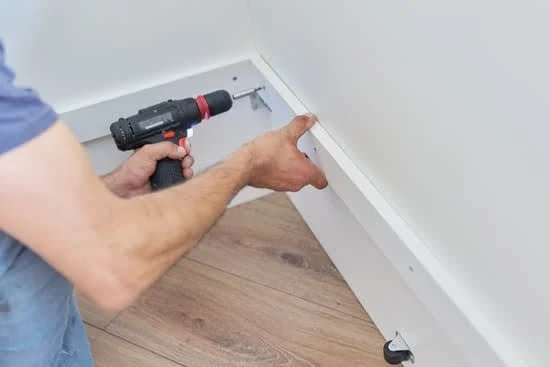Woodworking is a timeless craft that involves creating objects from wood, and one of the fundamental aspects of woodworking is joining pieces of wood together. For beginners, choosing the easiest woodworking joints is crucial to building confidence and honing their skills. Understanding the different types of woodworking joints and their benefits can greatly impact the quality and stability of your projects.
When starting out in woodworking, it’s important to begin with simple yet effective woodworking joints. These basic joints serve as the foundation for more intricate joinery techniques.
In this article, we will explore some of the easiest woodworking joints for beginners, including the butt joint, lap joint, dovetail joint, miter joint, bridle joint, and pocket hole joint. We will delve into each type of joint, discussing their pros and cons as well as providing step-by-step tutorials for creating these joints.
By familiarizing yourself with these easy-to-master woodworking joints, you’ll be well on your way to crafting beautiful and sturdy woodwork projects. Whether you’re looking to build furniture or engage in small DIY projects, mastering these fundamental woodworking joints will be an invaluable skill in your journey as a woodworker. So let’s dive in and explore the world of beginner-friendly woodworking joinery.
Butt Joint
A butt joint is one of the most basic and easiest woodworking joints to create, making it a popular choice for beginners. This type of joint involves joining two pieces of wood by simply butting them together at right angles and then securing them with nails, screws, or adhesive. While a butt joint may be straightforward to make, it does have its own set of advantages and disadvantages.
One of the main advantages of using a butt joint is its simplicity and ease of construction. With minimal tools and skills required, beginners can quickly learn how to create this type of joint. However, one major drawback is that butt joints are not the strongest woodworking joints and may require additional reinforcement to ensure stability and durability.
To create a butt joint, start by applying wood glue along the edge of one piece of wood. Then, position the second piece perpendicularly against the first piece, forming a right angle. Use clamps to hold the pieces in place while allowing the glue to dry completely. Additionally, reinforcing the joint with screws or nails can provide added strength and support for your woodworking project.
Overall, despite its limitations in strength, the simplicity and accessibility of creating a butt joint make it an excellent starting point for beginners who are just getting started in woodworking. As you gain more experience and skills in woodworking, you can explore other types of joints that offer greater structural integrity and versatility for your projects.
Lap Joint
A lap joint is one of the easiest woodworking joints and a great option for beginners to start with. This type of joint involves joining two pieces of wood by simply overlapping them and gluing or screwing them together. It is commonly used in simple woodworking projects such as picture frames, basic cabinet construction, and other small-scale woodworking tasks.
One of the main advantages of using a lap joint is its simplicity. It requires minimal tools and can be easily accomplished by even those who are new to woodworking. Additionally, it provides good strength and stability when properly executed. However, a potential downside of this joint is that it may not offer as much strength or durability compared to more complex joints, especially when used in heavy-duty applications.
To make a lap joint, begin by marking the area where the two pieces of wood will overlap. Then, use a saw to cut halfway through each piece along the marked line. Carefully remove any excess wood to create a smooth and flat surface for joining. Finally, apply glue or insert screws along the joint to secure the pieces together. With some practice and attention to detail, creating a lap joint can become an essential skill for any beginner woodworker.
As you continue your woodworking journey, mastering the art of creating lap joints will open up opportunities for more intricate projects. With experience, you can explore variations of this joint and combine it with other techniques to expand your skills as a woodworker. So don’t underestimate the simplicity of the lap joint – it may be easy to create, but its versatility and practicality make it an essential technique to learn in woodworking.
Dovetail Joint
The dovetail joint is one of the most classic and recognized woodworking joints, known for its strength and beauty. This type of joint is commonly used in cabinet making and furniture construction, creating a strong connection between two pieces of wood. The dovetail joint gets its name from the shape of the interlocking components, resembling the tail of a dove.
Pros and cons of using dovetail joint:
- Pros:
- Exceptional strength: The interlocking design of the dovetail joint provides great mechanical strength, making it ideal for heavy loads.
- Aesthetic appeal: Dovetail joints are known for their visual appeal, often showcasing craftsmanship and skill in woodworking projects.
- Long-lasting durability: When properly constructed, dovetail joints can outlast other types of connections due to their sturdy design.
- Cons:
- Complexity: Creating a dovetail joint requires precision and skill, making it more challenging for beginners or those with limited woodworking experience.
- Time-consuming: Due to its intricate design, crafting a dovetail joint typically takes longer than other simpler joints.
Detailed instructions on creating a dovetail joint:
- Begin by marking out the tails on one piece of wood and the sockets on the other piece where they will interlock.
- Use a dovetail saw to carefully cut along the marked lines for both the tails and sockets.
- With a chisel, carefully remove the waste material from within the socket markings.
- Test fit the pieces together, making any necessary adjustments to ensure a snug fit.
- Once satisfied with the fit, apply glue to the surfaces and assemble the joint by interlocking the tails into the sockets.
With patience and practice, mastering the creation of dovetail joints can open up new possibilities in your woodworking projects, providing both an aesthetically pleasing and durable solution for joining wood pieces together.
Miter Joint
A miter joint is one of the easiest woodworking joints to create, making it a popular choice for beginners. This type of joint is formed by cutting two pieces of wood at an angle and joining them together to form a 90-degree corner. The simplicity of the miter joint makes it a versatile option for various woodworking projects such as picture frames, decorative molding, and furniture.
One of the main advantages of using a miter joint is its clean and seamless appearance. When executed properly, the joint creates a smooth transition between the two pieces of wood with no visible gaps or joints. Additionally, miter joints are relatively easy to create with basic woodworking tools such as a miter saw or a table saw with a miter gauge.
To make a miter joint, start by measuring and marking the angle at which you want to cut the wood. Next, use a miter saw or table saw to make precise cuts at the marked angles on each piece of wood. Once the cuts are made, apply glue to the angled edges and join the pieces together to form the 90-degree corner. Clamps can be used to secure the joint while the glue dries for optimal results.
When working with a miter joint, it’s important to pay attention to accuracy and precision in both measuring and cutting. Any inaccuracies in angle measurements or cuts can result in ill-fitting joints that compromise the overall look and integrity of the project. With practice and attention to detail, mastering the miter joint can open up opportunities for creating visually appealing woodworking pieces with clean and professional-looking corners.
| Miter Joint | Easiest Woodworking Joints |
|---|---|
| Makes clean and seamless corners | Good for beginners due to its simplicity |
| Precision in measuring and cutting is crucial | Versatile for various woodworking projects |
Bridle Joint
A bridle joint is a simple and strong woodworking joint that is commonly used in furniture making and carpentry. It is created by joining two pieces of wood at their ends, forming a right angle.
This type of joint is popular because it provides good strength and stability, making it suitable for various woodworking projects. In this section, we will explore the bridle joint in more detail, including its overview, advantages and limitations, as well as a step-by-step guide on how to craft a bridle joint.
Overview of Bridle Joint
The bridle joint is characterized by the interlocking connection between two pieces of wood at their ends. It is achieved by cutting a notch in one piece of wood and creating a corresponding tongue on the other piece to fit into the notch. This results in a secure and sturdy joint that is often used in constructing frames, tables, chairs, and door frames.
Advantages and Limitations of Bridle Joint
One of the main advantages of the bridle joint is its superior strength and resistance to twisting forces. This makes it an ideal choice for load-bearing structures such as furniture frames. Additionally, the bridle joint provides a large gluing surface area, ensuring improved bonding between the pieces of wood. However, one limitation of this type of joint is that it requires precision when cutting the notch and tongue to ensure a tight fit.
How-to Guide for Crafting a Bridle Joint
To create a bridle joint, you will need to carefully measure and mark the location for the notch and tongue on each piece of wood. Using a chisel or table saw, carefully remove the material to form the notch and tongue according to your measurements.
Once you have achieved a precise fit between the two pieces, secure them together with glue and clamps for added strength. Finally, allow sufficient time for the glue to dry before further working with your newly joined pieces.
With this knowledge about bridle joints, beginners can confidently incorporate this woodworking joint into their projects while gaining experience in creating durable and reliable connections between wood components.
Pocket Hole Joint
The pocket hole joint is one of the easiest woodworking joints for beginners to learn and master. This type of joint is popular in woodworking due to its simplicity and effectiveness in joining two pieces of wood together. It involves drilling a hole at an angle into one board and then joining it to another board using a specialized screw called a pocket screw. The resulting joint is strong and durable, making it suitable for various woodworking projects.
One of the main advantages of using a pocket hole joint is its simplicity and ease of execution. It does not require complex tools or advanced woodworking skills, making it perfect for those who are just starting their journey in woodworking. Additionally, this type of joint allows for quick assembly, making it ideal for DIY enthusiasts who want to complete their projects efficiently.
Despite its ease of use, the pocket hole joint does have some drawbacks. For instance, it may not be suitable for fine furniture or high-end woodworking projects where seamless joints are necessary for aesthetics. Additionally, the visibility of the screws used in this joint may not be desirable for certain applications.
To create a pocket hole joint, you will need a pocket hole jig, which is a tool designed specifically for creating pocket holes at the appropriate angle and depth. Once the holes are drilled, the two pieces of wood can be joined using pocket screws to secure them together. This process results in a strong and reliable joint that is perfect for various woodworking applications.
| Advantages | Disadvantages |
|---|---|
| Simple and easy to execute | May not be suitable for fine furniture |
| Quick assembly | Visibility of screws may not be desirable |
Conclusion
Woodworking joints are essential in crafting sturdy and durable structures, furniture, and other wooden items. For beginners, selecting the easiest woodworking joints is crucial to build foundational skills and gain confidence in their woodworking projects. By choosing the right type of joint, beginners can simplify the construction process while still achieving strong and reliable results.
A butt joint is one of the easiest woodworking joints for beginners to create. It involves joining two pieces of wood by simply butting them together at a right angle and securing them with glue, screws, or nails. While this joint is easy to make, it may not be as strong as other types of joints and may require additional reinforcement for certain projects.
Another simple woodworking joint for beginners is the lap joint, which involves overlapping two pieces of wood and bonding them together with adhesive or fasteners. This joint provides good strength and surface area for gluing, making it suitable for various woodworking projects. However, it may not be ideal for load-bearing structures due to its limited surface contact.
The dovetail joint is known for its strength and decorative appeal. Although it may seem intimidating at first, with practice and precision, beginners can master this joint. Its interlocking design provides exceptional strength and resistance to pulling forces, making it suitable for constructing drawers, boxes, and other furniture pieces. While more complex than butt or lap joints, the dovetail joint offers a rewarding challenge for budding woodworkers.
As beginners advance in their woodworking skills, they can explore other types of joints such as miter joint, bridle joint, and pocket hole joint to expand their repertoire of joinery techniques. With dedication and practice, mastering these easiest woodworking joints will set the foundation for creating high-quality wooden projects in the future.
Additional Resources
In conclusion, understanding and mastering woodworking joints are essential for beginners who are just starting their woodworking journey. Choosing the easiest woodworking joints can help build confidence and skills before moving on to more complex joint techniques. The butt joint, lap joint, dovetail joint, miter joint, bridle joint, and pocket hole joint are all great options for beginners to start with.
Remember that practice makes perfect when it comes to woodworking joints. Don’t be discouraged if your first attempts don’t turn out perfectly. With patience and dedication, you’ll soon become proficient in creating strong and beautiful woodworking joints.
As you continue to develop your skills, don’t hesitate to seek out additional resources such as books, online tutorials, and classes to further enhance your knowledge of woodworking joints. Learning from experienced woodworkers and exploring different techniques will help you grow as a craftsman. Keep practicing and experimenting with different types of woodworking joints to expand your repertoire and create stunning pieces of furniture or wooden creations.
Frequently Asked Questions
What Is the Simplest Joint in Woodworking?
The simplest joint in woodworking is the butt joint. This type of joint involves joining two pieces of wood by simply butting them together at a right angle, without any special cuts or additional materials.
Which Wood Joint Is the Easiest to Make?
The easiest wood joint to make is the butt joint. It requires minimal skill and tools, making it accessible for beginners. However, while simple, it may not be the strongest option for joining wood pieces together.
Which Wood Joint Is the Simplest and Weakest?
The simplest and weakest wood joint is also the butt joint. Because it relies solely on the strength of glue or fasteners, it tends to be less durable and stable compared to other joints like dovetail or mortise and tenon joints.

Hi everyone! I’m a woodworker and blogger, and this is my woodworking blog. In my blog, I share tips and tricks for woodworkers of all skill levels, as well as project ideas that you can try yourself.





